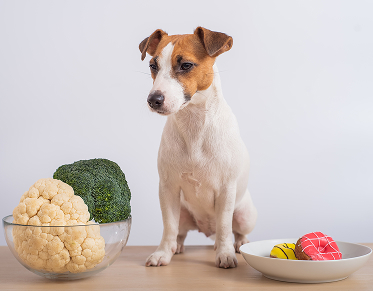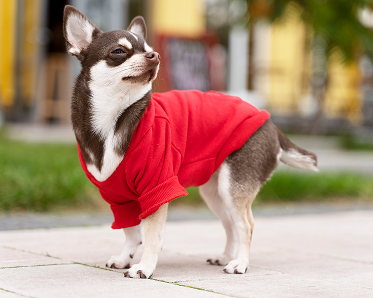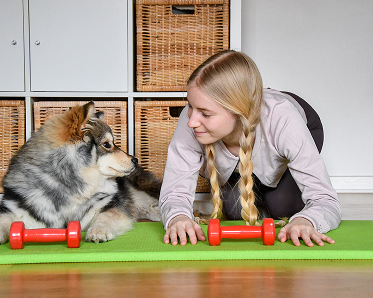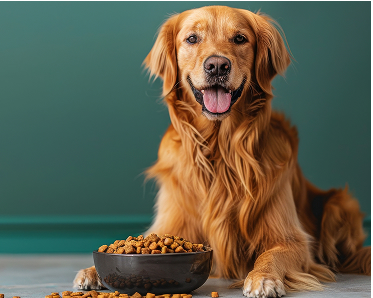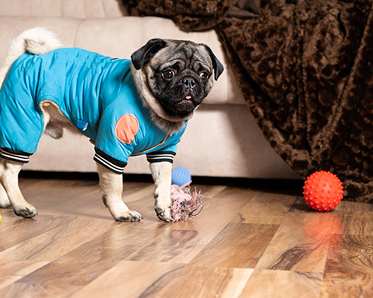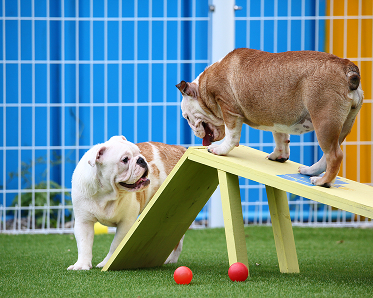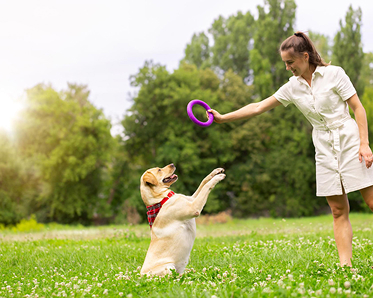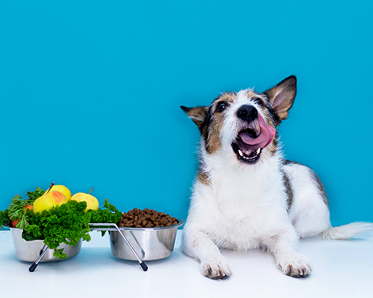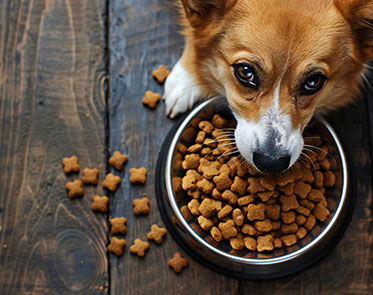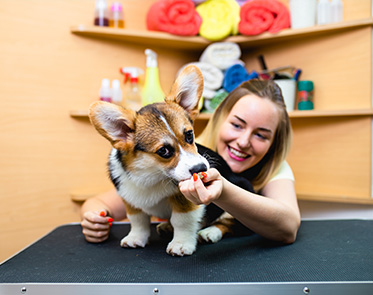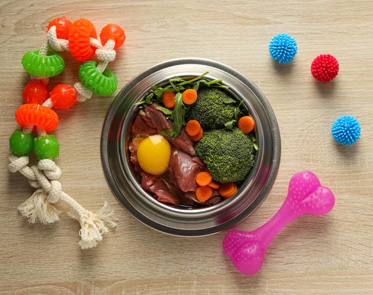What Are Different Types of Dog Food?
27 August 2024Traditionally pet food doesn’t have vast varieties in the market. People used to rely on a natural diet for dogs. However, the present market offers a wide range of dog food in multiple flavors, shapes, and colors. This made the pet parents get confused about what to choose and why. The major concern is not just about the type of food, it is about the food you select that must meet the nutritional needs of your pet. To make the right decision, it is vital to understand the different types of dog food.
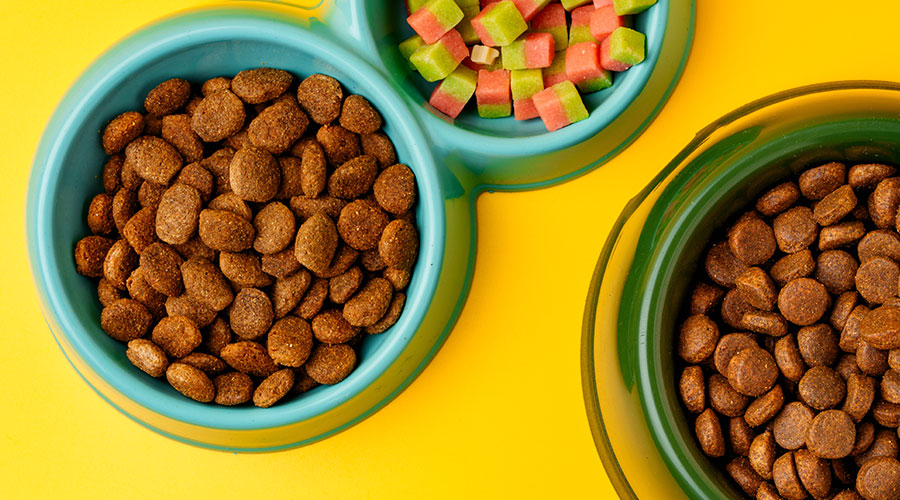
Types of Dog Food
Kibble
Kibble can be also called dry dog food. This is classified as the most economical variety of dog food. It is available in multiple forms such as flakes, biscuits, kibbles, etc. This is also famous for its very long shelf life and easy serving and cleaning. It doesn’t require any preparation and will not leave an unpleasant odor behind. It is usually in the form of bite pieces which are commonly purchased in containers or bags that are easier to store without a refrigerator.
Kibbles usually have a crunchy texture that helps the dogs reduce tartar buildup and provides little dental exercise to promote healthier teeth and gums. Kibbles are available in multiple forms and flavors, and it is considered a nutritionally complete food that can fulfill your dog’s nutritional needs. It is available in forms like puppy chow to advanced age blends which are specifically intended for different stages of a dog’s growth. However, it is not easy to find the right kibbles from the market for your dog. Therefore, read the ingredients list of the product carefully and get help from the pet experts who understand your pet’s needs accurately.
Canned Food
This is one of the food varieties for dogs that are very easily available in markets. It has a large shelf life and thus it’s expensive. The protein and nutrition content in canned food may differ according to the brands. In some of the canned foods, the protein content in it is not even in a digestible form which passes from the dog’s system into an absorbable form. It contains 75% of water and this moisture content will help to dilute its nutritional value. Compared to other foods, canned foods can create a nutritional imbalance in your dog’s diet since they contain high fat and low protein content. Usually, pet foods with a higher water content have low nutrients. Therefore, dogs must consume more canned food to fulfill their nutritional needs.
Mostly canned foods are perfect for dogs who are picky eaters and for dogs who have lost their appetite. Apart from all these, there are few side effects for canned foods. They are very repulsive and strong odor and an imbalanced fat-protein ratio. However, it is recommended to buy 100% nutritionally complete canned food if you prefer to provide that for your pet. Check out the label carefully to ensure it.
Semi-Moist Dog Food
Semi-moist dog foods are mostly considered as an occasional treat for your dogs in addition to the regular diet. This is because it is not at all healthy for your dogs since it fails to provide the required nutrition for your dogs. Semi-moist foods consist of very high waste, sugar, and salt content along with added preservatives, colors, and flavors. It is usually shaped like meat products like pork chops, burgers, etc. It is considered the least healthy form of dog food. However, due to its resealable pouch form, it is very convenient to pour and store at your home or while traveling.
Home Cooked Food
Apart from all other food varieties, you are the only one in charge of all the pros and cons of home-cooked dog food. Using home-cooked dog food will provide you with the in charge of your dog’s diet and nutritional needs. Home-cooked dog food is prepared like human food items with a lot of flavors and textures for your dog. This provides you with an overall idea about what is in and lacking in your dog’s food and diet. Home-cooked foods are minimally processed, and they can benefit the dog’s health to a large extent. Sometimes it may feel like an expensive task, still it can enable you to learn and understand about your pet’s nutritional needs and prepare the meals accordingly. You can also provide them with different tastes and varieties of ingredients so that they will not get bored with the same food items. Following home-cooked dog food can ensure the nutritional value, health, and safety of your dog. Consult a pet expert to have a clear picture of your dog’s needs and requirements.
Raw Dog Food
Raw dog food is animal meat or poultry which are either frozen or in freeze-dried form. It is a combination of raw meat, bones, and organs. This is considered as an ideal dog food since it resembles the natural diet of dogs more closely. Apart from that it is very nutrient-dense and provides calcium and phosphorus. Dogs have very short intestinal tracts and strong stomach acids, and thus raw dog foods can be well tolerated by many dogs. Raw food is very easy to chew and digest.
But compared to other foods, raw dog foods are very hard to use and store. It is one of the most expensive dog food types. They should be properly stored in a freezer and the absence of a freezer even for a few minutes can cause them potentially to go bad. It has a very much shorter shelf life, and you must thoroughly clean the food as well as the dog bowl after every meal. After all, you must ensure the disposal of the leftovers properly and cleanly to get rid of any lingering odor.
Feeding your pet with the right dog food is the ultimate approach to keep them healthy. And keeping them healthy displays your affection towards your lovely pets. Therefore, follow the tips and ensure a healthy life for your loved ones.
Get to Know more pet care services: Pet day care, Dog Clothes, Doggy Day care & more




